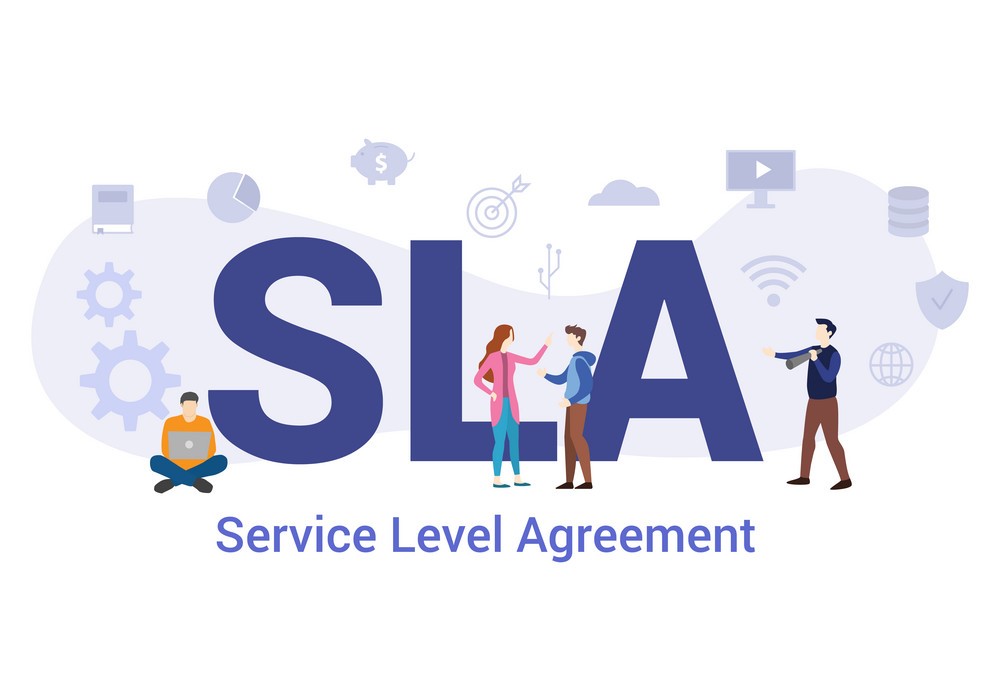

In the realm of business relationships, uncertainties, miscommunications and unfulfilled commitments can arise among customers, service providers and internal departments. Service-Level Agreements (SLAs) serve as a powerful tool to mitigate these challenges and establish clear expectations from the outset.
While SLAs might seem complex, this guide aims to demystify them, providing you with the knowledge to navigate the world of SLAs proficiently. We will cover:
SLAs specify the level of services a customer can expect from a supplier or vendor. It outlines the expected services, metrics for measurement and penalties for non-compliance. SLAs are not only a mutual agreement between vendors and the companies they supply but also can be internal, between different departments within a company.
Vendors such as Adobe, Google, Amazon Web Services and Microsoft etc. use SLAs to provide details about guaranteed interface availability, expected server downtime and customer compensation for service disruptions.
Documenting expectations and metrics in an SLA ensures a shared understanding between parties to prevent disputes over failed deliverables or underperformance/unavailability of services. Internal SLAs within companies help avoid misinterpretation and miscommunication between departments.
Every organization's SLA may vary, understanding some fundamental aspects is crucial before diving in.
Most vendors have standard SLA to cover their services, serving as a foundation for negotiations. It's essential to treat vendor's standard SLA as a starting point and customize it to align with your specific needs.
Critical components to include in an SLA are:
Indemnification is a crucial clause in an SLA, stating that the vendor will indemnify the customer for failure to deliver agreed services. This includes covering legal costs, damages, losses or liabilities resulting from SLA violations. It's advisable to negotiate the scope of indemnification with the supplier.
There are three major types:
SLA details are unique to each business, but here are examples from major companies:
Before consulting legal counsel, consider these FAQs:
1. Is an SLA Transferable?
The transferability of an SLA depends on the acquiring company after a merger. It's best not to assume transferability.
2. What Happens if Service Levels Aren't Met?
Penalties for unmet service levels are outlined in the SLA, usually involving service credits deducted at an agreed-upon rate.
3. What Are "Earn Backs"?
Vendors may include clauses allowing them to earn back service credits lost by performing at or above standard levels for a specific time.
4. How Often Should SLAs Be Revised?
SLAs are dynamic documents and should be reviewed when business needs change, technology evolves, workloads shift or metrics and processes are updated.
SLAs, by removing ambiguity, contribute to smoother relationships. Establish expectations, define metrics and use a content management tool to organize and make the SLA readily accessible.
If your company relies on suppliers for services, meet with your team to establish expectations from vendors and the metrics for evaluation. Suppliers, define the scope and accessibility of your services clearly.